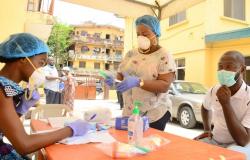What do we know about Covid-related innovation in poor countries and should aid agencies get involved?

Bens Ramalingam and Kumpf have a thought-provoking new paper out on Covid-linked innovation in poor countries, and the lessons for aid donors. Here are some highlights, and a minor rant it inspired in me.
The paper documents a range of fascinating innovations. Here’s a flavour:
‘Problem: A health official in a large city in India is tasked with sourcing quality masks for hospitals dealing with COVID-19 cases across the city. Supply chains and manufacturing have shut down, and there are very few organisations with practical experience of how to do such work. Who can help?
Solution: The official finds online videos of a maker group based in Mumbai that is repurposing its facilities to produce quality masks quickly and that is part of a global network of maker spaces. The group is inviting institutions that are responding to COVID-19 to get in contact. The official puts in a request, as do some hospitals. Within a few weeks, there is a national network of makers responding to such requests and producing over one million masks.
Problem: A senior social inclusion specialist working for the Peruvian government at the height of lockdown needs a way to track safely the welfare and livelihood conditions of the country’s elderly and vulnerable populations. What is the best way to tackle this urgent issue?
Solution: The specialist works across government departments, international organisations and civil society organisations to organise Peru’s first massive online volunteer scheme, which successfully mobilises 20 000 young people as digital track and tracers to connect to and learn about the health conditions and needs of almost half a million of society’s elderly and most vulnerable.
Problem: A Nairobi bus fleet owner is working on the process of contact tracing for one of the most mobile populations in the world, where over 50% of people use public transport every day. How can this be achieved?
Solution: The fleet owner gets all its public drivers and operators to sign up to a Kenya-developed app called mSafari using their vehicle registration numbers. All passengers then upload their details onto the app, which is used to trace future cases and clusters, trigger automated warnings to passengers exposed to known cases, and also to set and monitor the maximum safe number of passengers allowed on each vehicle. After an initial pilot, the government of Kenya is looking at wider legislative changes around the collection and use of public transportation information.’
Such examples reveal that innovation often bears little resemblance to some tech white saviour fantasy of ‘tech transfer’ from rich countries to poor ones.
‘Low-income and middle-income contexts are often resource-constrained when it comes to solving problems, and the COVID-19 crisis has placed additional constraints. While the problems and related solutions are diverse, a common feature of the efforts examined for this study is that many innovators have worked to take existing technologies, tools or techniques and strip out features that are seen as surplus to requirements and/or exceeding resources. This was true of government innovators, health sector officials and activists. Interestingly, this process of radical simplification stands in contrast to the over-engineering of new products or services that characterises many efforts in the innovation for development endeavour.’
And some important insights into ‘how innovation happens’ in such settings:
‘Novelty largely stems from combination, permutation and substitution
Making use of scarce resources often means rethinking how things will be put to use. The principles of combination (bringing two unrelated ideas together to make a new approach); permutation (testing out different configurations of an existing solution); and substitution (swapping around the inputs, processes or outputs of a solution) are widespread in low-income and middle-income contexts. Where simply finding more resources to throw at a problem is not practical or feasible, the process known as “combinatorial play” can be a powerful way of achieving more with less.

M19 Initiative, Mumbai. Credit: Makers Asylum
For example, numerous ventilators created for use in developing countries are made almost entirely with off-the-shelf parts that can be found in hardware stores. One particular solution that quickly reached the Indian market is the AgVa portable ventilator. Among its features, it:
• does not require an oxygen supply as it oxygenates air from the room it is in
• builds on the computational power of mobile phones and a dedicated app
• weighs barely a tenth of what typical commercial ventilators weigh, and so is easily portable
• has open-source specifications, so it can be adapted for use in different countries and contexts
• costs less than a tenth of what conventional ventilators cost and can be produced much more quickly.’
Great stuff and then, because after all, this research is published by the OECD development arm, there is the inevitable call for aid donors to get better at supporting such innovation.
Cue rant. Sounds fine, but why and how should this happen?
Why? Because innovators need resources, obviously. But what is likely to happen when aid agencies arrive bearing cheques, but those are accompanied by logframes, reporting requirements, monitoring and evaluation systems etc etc? That sounds more likely to kill the innovation goose than produce more golden eggs.

Where’s the theory of change?
And how? How exactly would you convince aid agencies to take these kinds of risks, to back more projects likely to end in failure (as most innovations do)?
So here’s my modest proposal. As well as the standard recommendations section at the end of reports, be they research papers, or august high level panels on this and that, there should be a ‘Theory of Change/Action’ section, which explores whether/how these recommendations could ever be implemented. That would include an analysis of the blockers and drivers of change, the likely moments when such changes are more likely to occur, the narratives that might win over the doubters etc etc. Any takers?
This first appeared on Duncan's blog FP2P.
Image: Community Contact Tracing, Nairobi Credit: IGC


